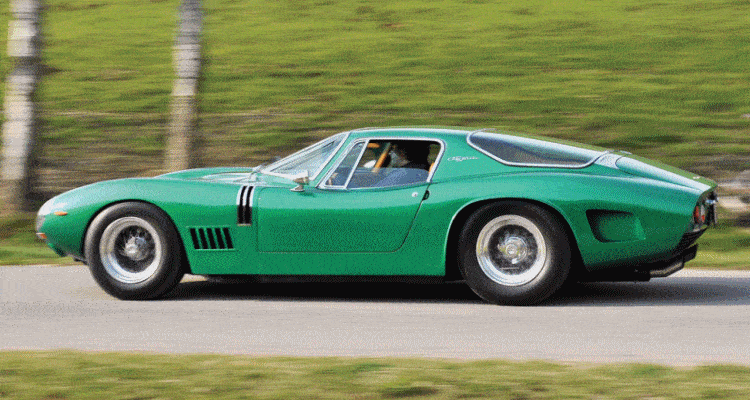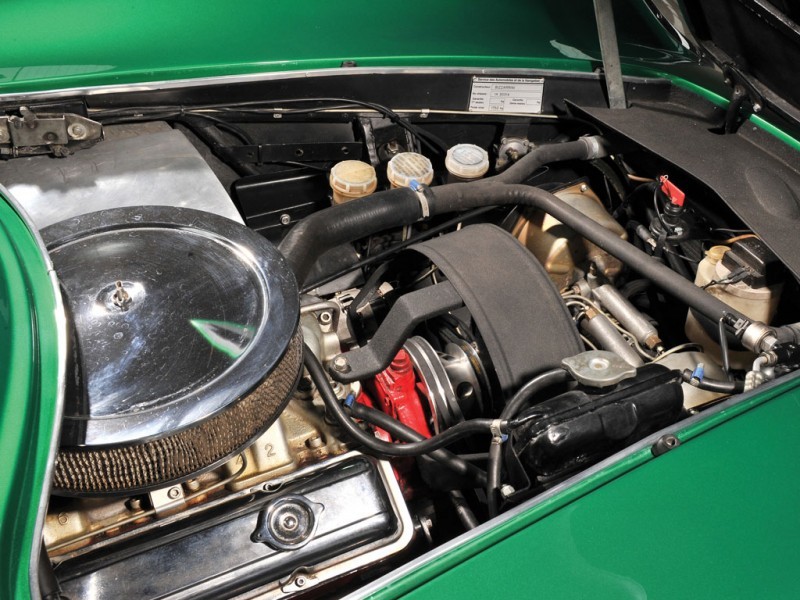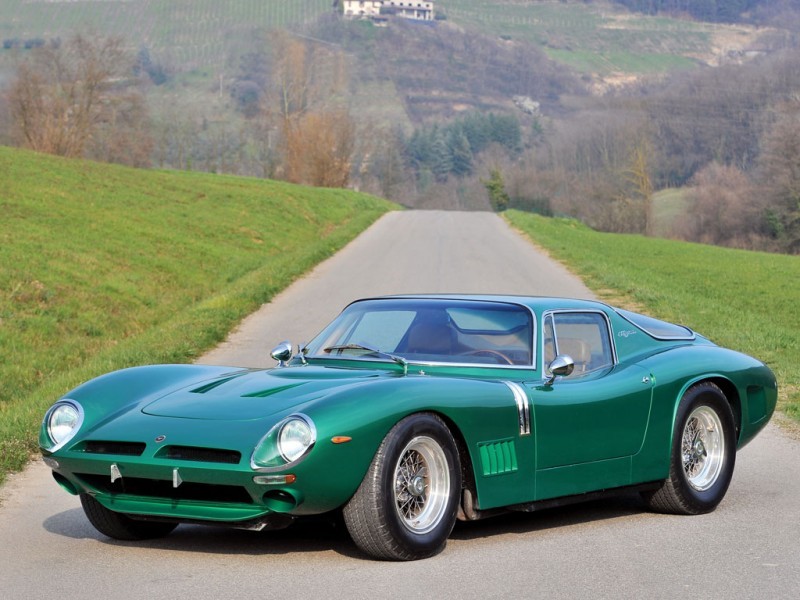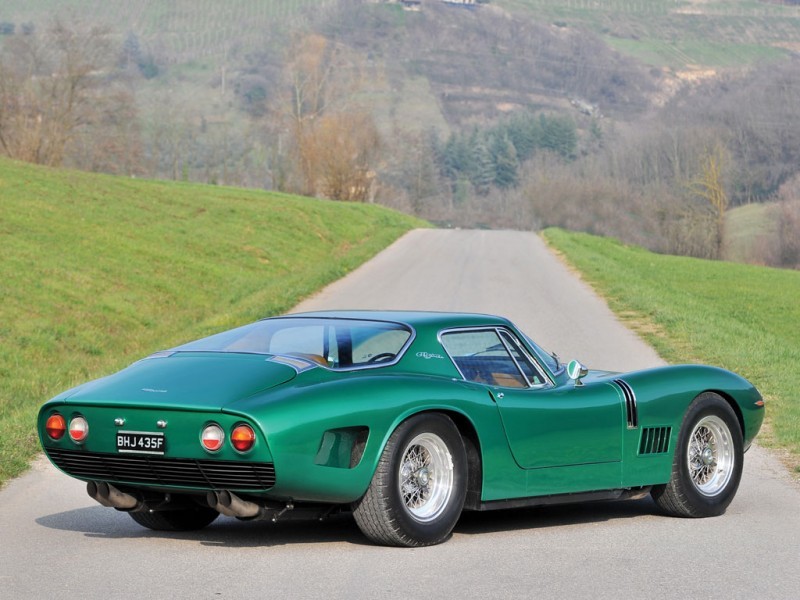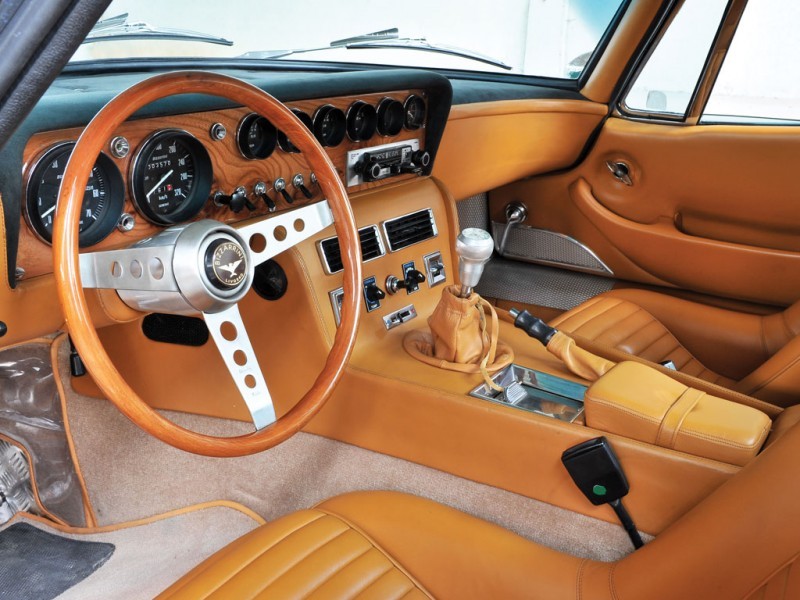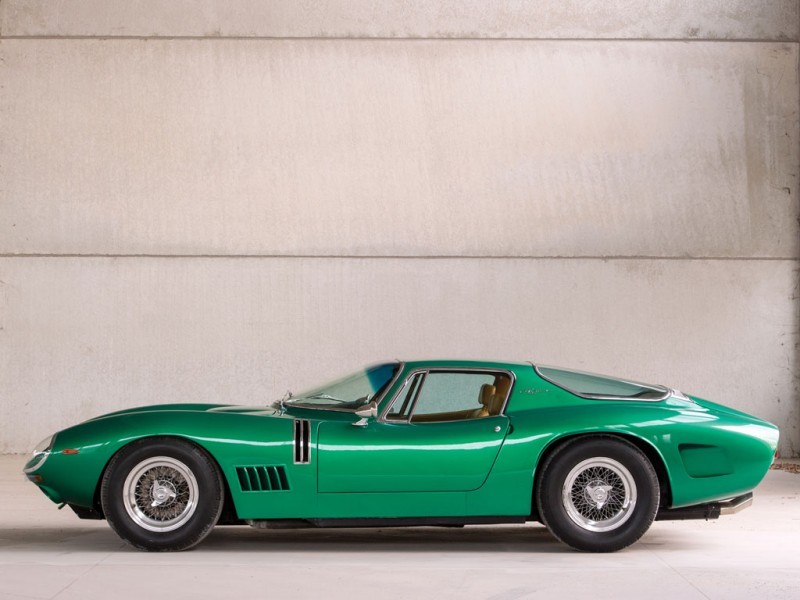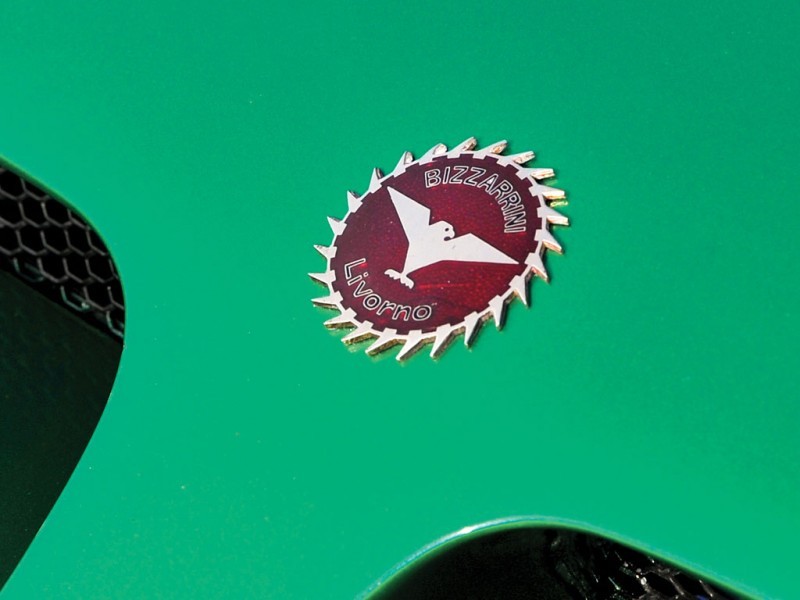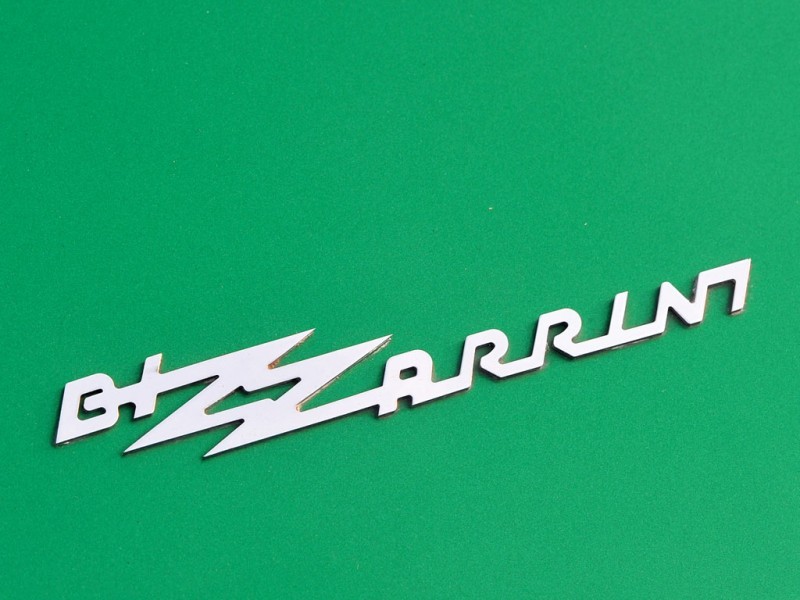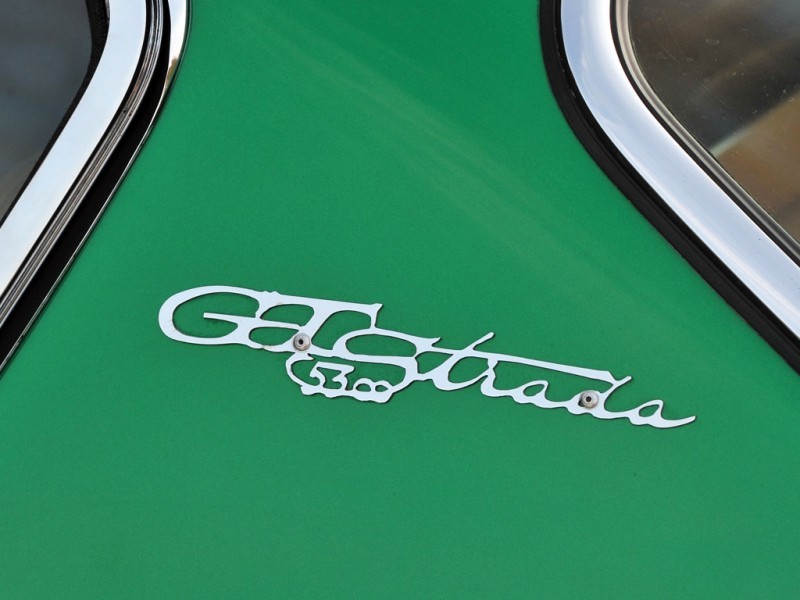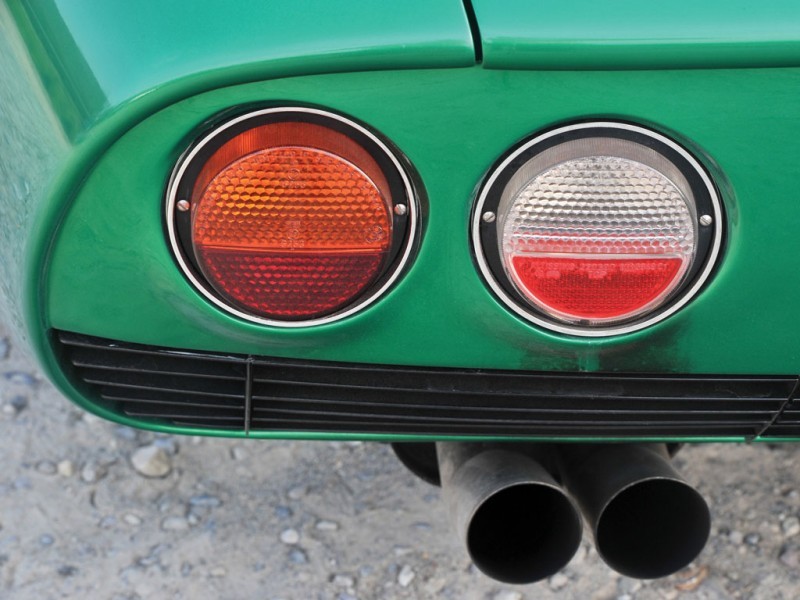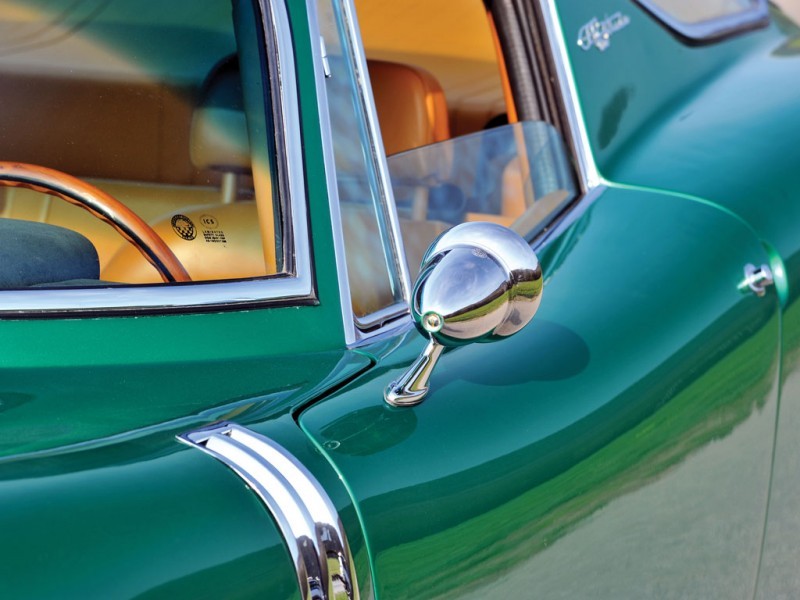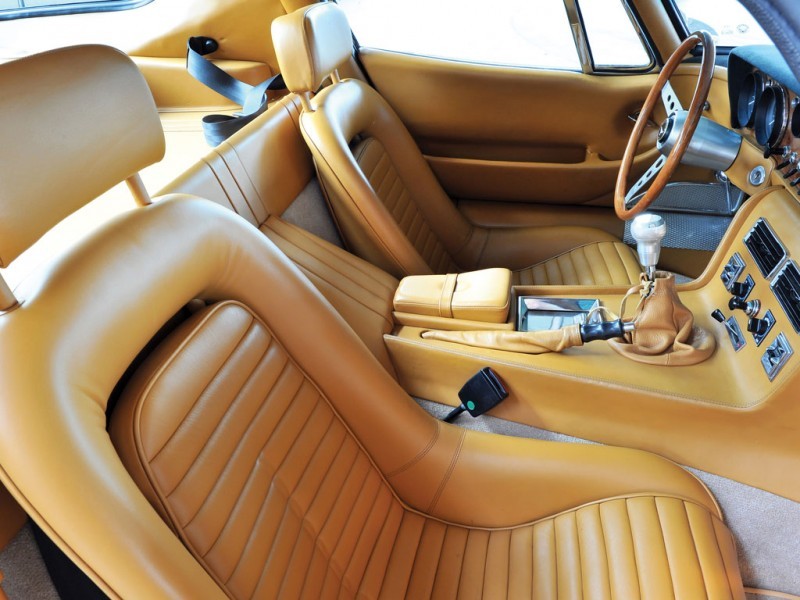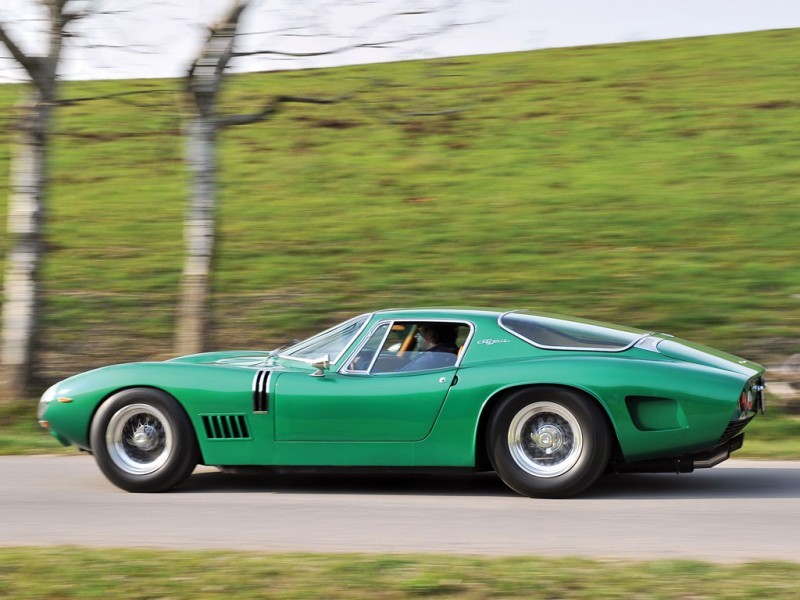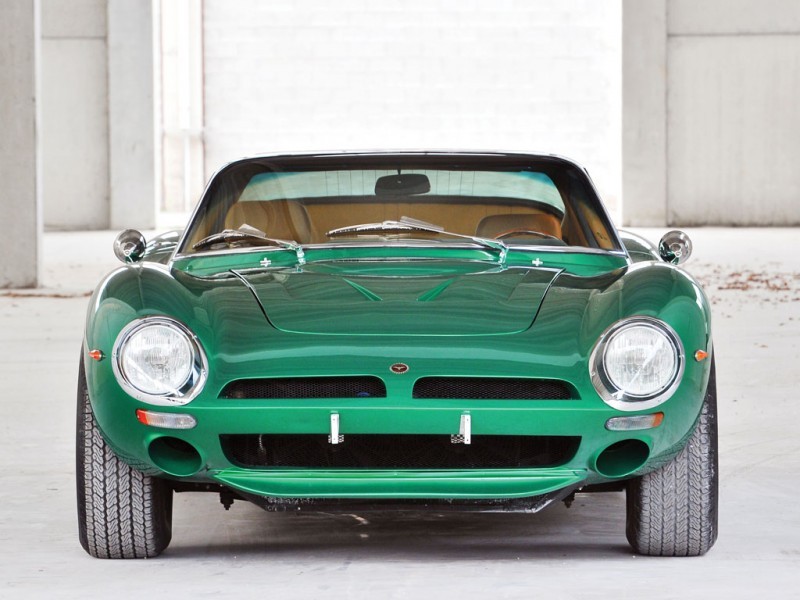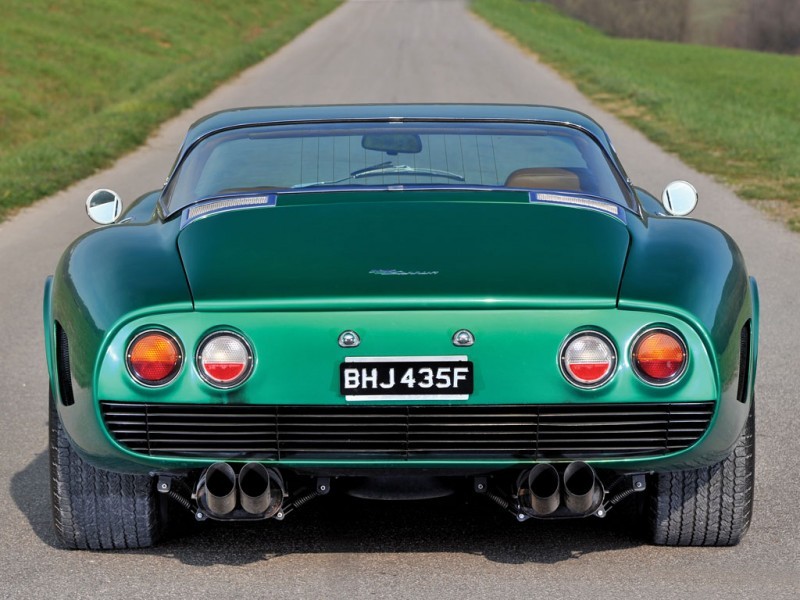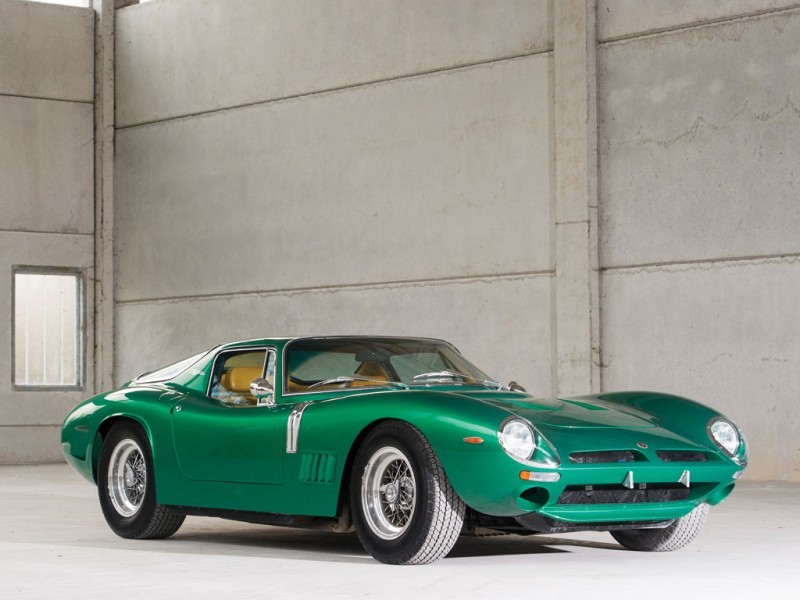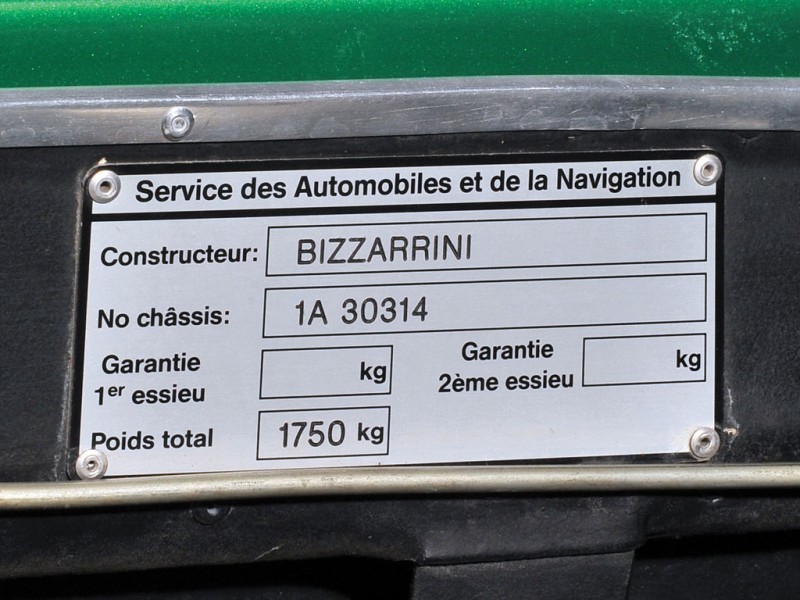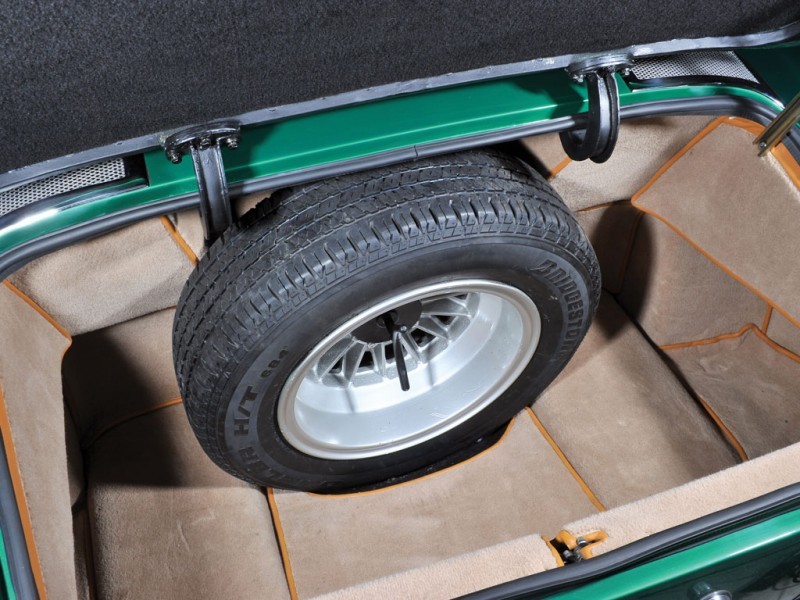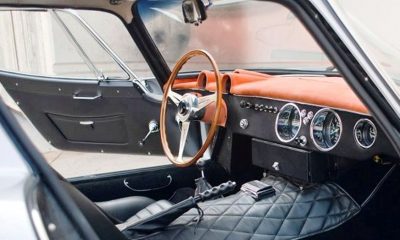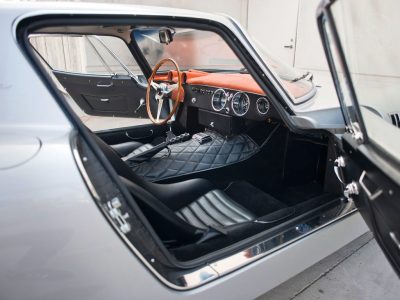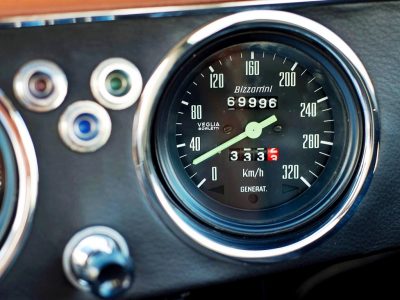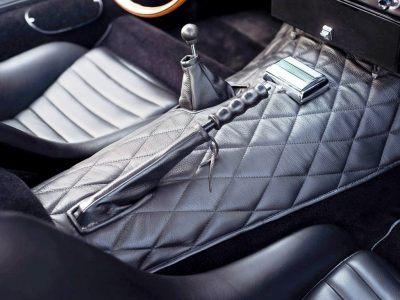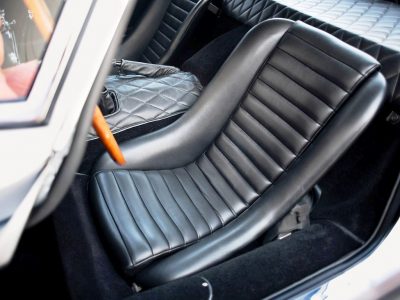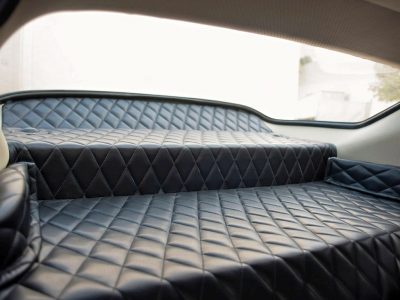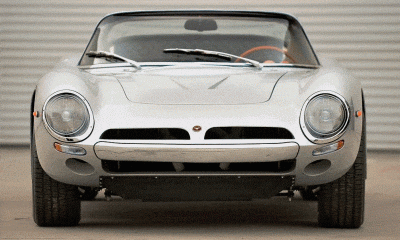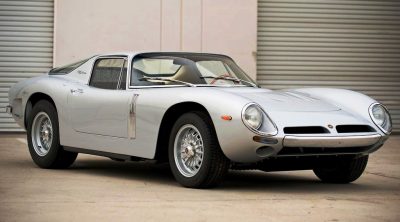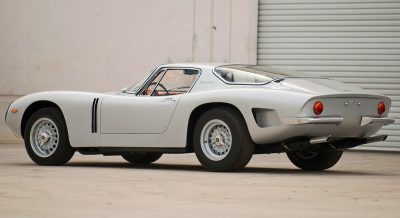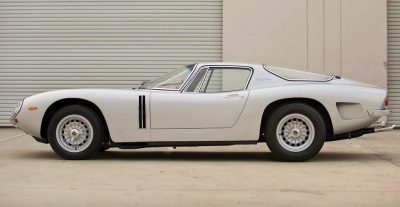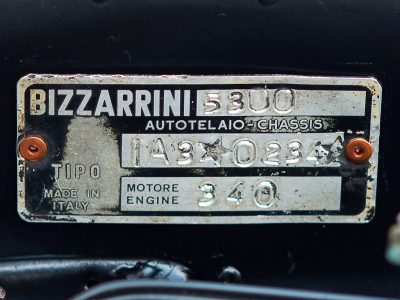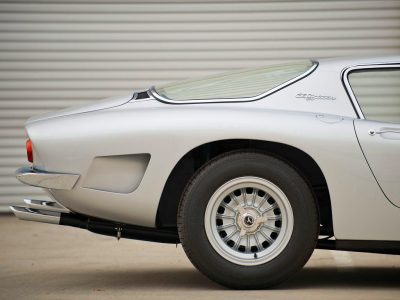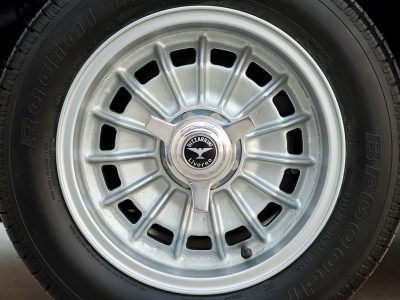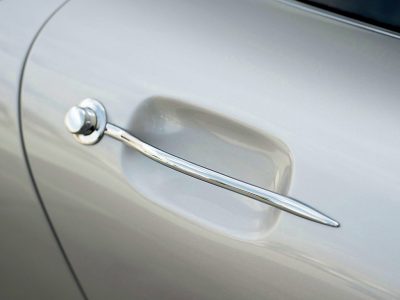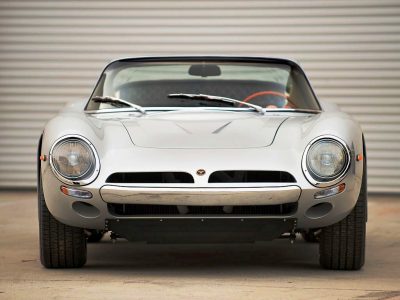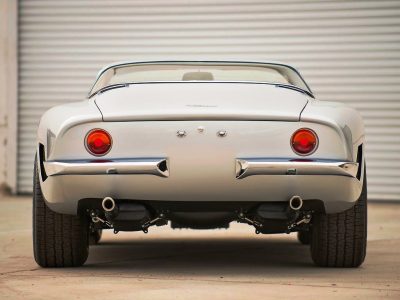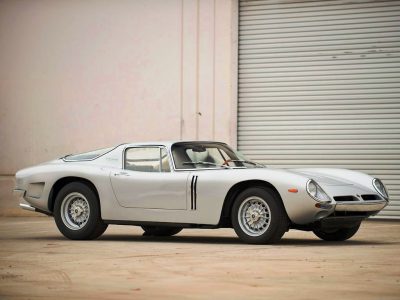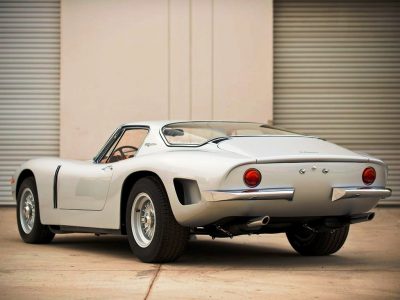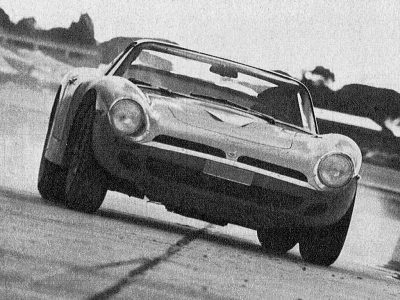Ever the tornado of creativity and speed, Ferrari was quite volatile in the early 1960s.
For every race they won, it seems like a failed buyout from Ford and the epic ‘palace revolution’resulted in a big brain drain for Maranello. Competing hot-shot engineers would form nearly a dozen competing supercar marques, including Lamborghini, De Tomaso, Iso, ATS, ASA and Bizzarrini.
Each led by a mastermind engineer, stylist, machinist or visionary, only Lamborghini’s brand was strong enough to make it to the 1970s and beyond. The Ferrari exodus left all these talented men with huge ideas, but less of a real concept of how to bring the car to market effectively and resolve development problems outside their specialized area of expertise.
Bizzarrini’s worked with all of the above firms before eventually launching what would be his best-known model: the 1965 Bizzarrini 5300 GT Strada Alloy supercar. With all the latest curves, a wide road graphic and a low roof: the Strada was a gorgeous hit right from the start.
Sharing the low nose and mid-engine stance of the Lamborghini Miura, the Strada is actually a front-engine coupe powered by a reliable and torque-rich 5.3-liter Chevrolet small-block V-8.
That’s right, the long history of Chevy small-block V-8 engines in bespoke supercars started well before the 2013 Local Motors Rally Fighter’s 6.2-liter LS3 motor.
This rag-tag gang of Ferrari refugees was actually almost in lockstep in terms of their style preferences and rapid evolution of proportions and platforms in the 1960s. Wide and low became more and more popular, until reaching its zenith with the reveal of the Lamborghini Miura: a mid-engined hypercar so advanced that that it was the Veneno or better of its day.
The Miura’s low and swoopy side graphics are mirrored in the Bizzarrini Strada GT, which is incredible as the Miura instantly made every road car, and some race cars, from Ferrari seem hopelessly retro. Italian racing V-12s of the day were shaped like a washing machine, so the Miura actually found the only place it would fit in this low shape: longitudinally, behind the cabin.
Bizzarrini had the same style vision, but looked abroad from his Iso Revolta GT expereince to source the new and compact Chevy small-block engine. Without Ferrari’s tall carburetor stacks to ruin the nose height, this was space-age packing and the Strada GT is gorgeous because of it.
Simple and elegant air slashes are carved from the nose, while an integrated chrome bumper is one of the last to be actually mounted to the aluminum body shell. Pending impact regulations ruined the look of decade or more Italian supercars after 1970.
A swooping back glass echoes the flat engine deck of the Miura very nicely, giving the two cars remarkably similar profile appearances.
Interior
The interior looks as wide and versatile as a Corvette, with a huge luggage area lined in black leather behind the twin seats. A wide console was very en vogue then as now, while the Strada’s door cut-outs might have inspired the decades-later Bristol Fighter.
Simple gauges and trim work shows a bit more amateur construction at Bizzarrini versus the Maserati Ghibli of the day – which was arguably the poshest and swankiest GT supercar interior yet in 1967.
Mechanical Details
In addition to being a packaging marvel, the Chevy small-block was also highly tunable and able to withstand almost any track abuse versus the delicate and temperamental Italian race engines of the day. With 5.3-liters, this size engine is still the sweet spot for millions of Chevy trucks and SUVs every year.
Light alloy bodywork of this car was a revolution versus the fiberglass that was typically employed by these small-volume artisans. (Toxic fiberglass might explain a shorter career for some of these gentlemen, actually.)
Lightweight and also a stressed member of the chassis, the alloy panels increased rigidity markedly and also the value of this example.
At the time, Bizzarrini claimed that a 5300 GT Strada Alloy hit 180 mph at the Mulsanne straight of Le Mans during testing, but these are generally very ‘wink wink’ type boasts. Even so, it was much faster and had far more top end potential than any Ferrari models, generally tuned to deal with tight tracks and a gas stop every 30 minutes.
A four-speed box channels the power to the rear wheels, for an estimated 7.0 second sprint time. This beat the launch Miura, and its front-engine design offered far better stability over 130 mph than the wing-shaped Lambo.
1965 Bizzarrini 5300 GT Strada Alloy – Performance Details:
| Engine | 5.3-liter 16-valve V-8 With OHV |
| Transmission | 4-Speed Manual |
| Power | 365 horsepower |
| Torque | 310 pound-feet, est |
| 0-60 mph | 7.0 seconds, est |
| Top Speed | 180 mph, claimed |
| EPA Fuel Economy (City/Highway/Combined) | 12/14/12, est |
This exact car sold in August 2013 at Pebble Beach by RM Auctions for $693,000.
This was a bold car and certainly one that had a direct influence on brands and styling across the world as well as the Tuscan countryside. For his achievement here, Giotto Bizzarrini should be commended and remembered as one of the great pioneers in supercar history.
As an ultimate ‘make Enzo suffer’ character in the Ferrari telenova, his role as a villain to Enzo’s Capo is nothing more than fiction (or destiny, as Ferrari fans might say).
Image credit thanks: RM Auctions
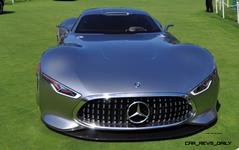
Tom Burkart is the founder and managing editor of Car-Revs-Daily.com, an innovative and rapidly-expanding automotive news magazine.
He holds a Journalism JBA degree from the University of Wisconsin – Madison. Tom currently resides in Charleston, South Carolina with his two amazing dogs, Drake and Tank.
Mr. Burkart is available for all questions and concerns by email Tom(at)car-revs-daily.com.

